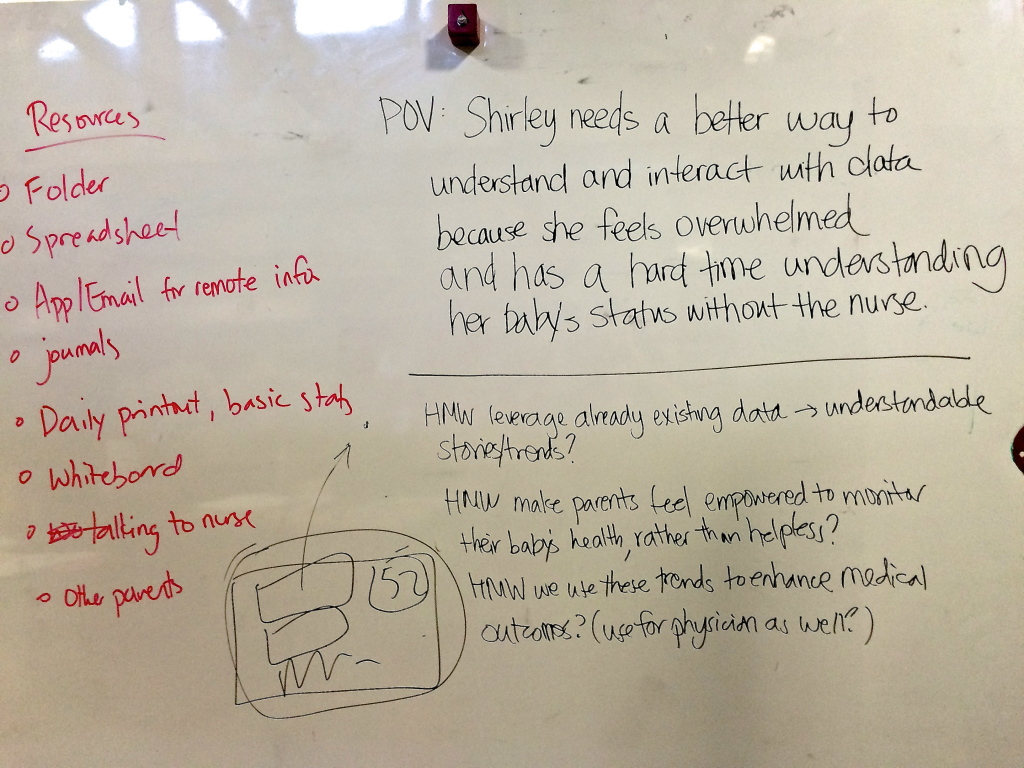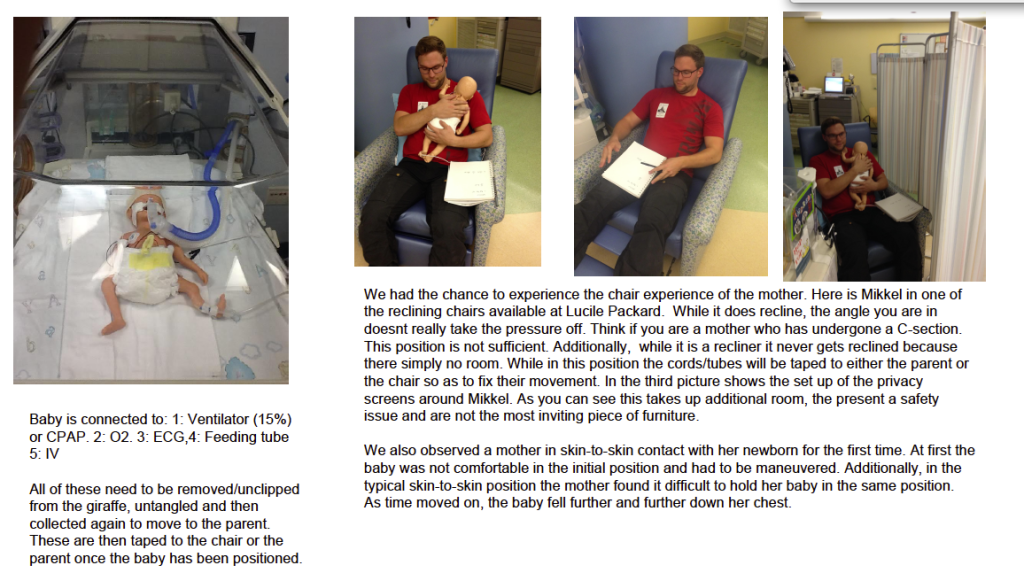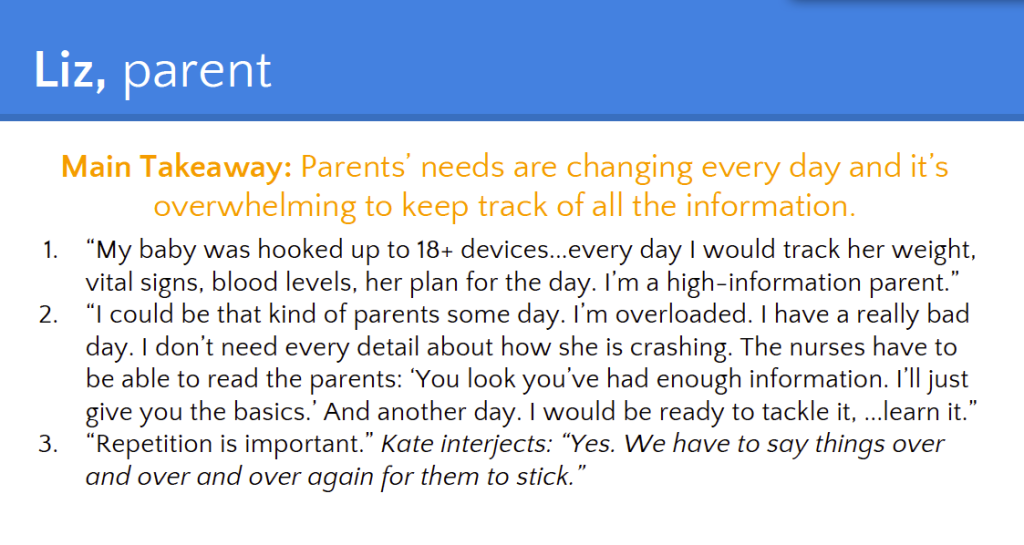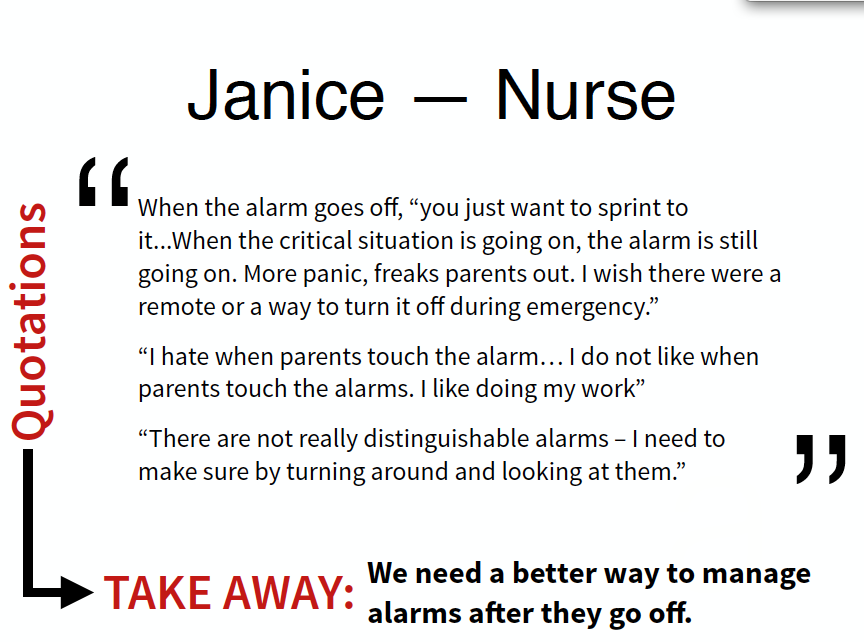Over the past week, groups were charged with conducting one additional interview with a clinician, a parent, and in one group’s case, a social worker. By today they had synthesized five interviews. They were asked to identify three meaningful quotes from each interview (relevant to their projects) and write what the big insight or “take-away” was from each interview. This process helps designers understand their user (gain empathy), identify the problem, and then start to brainstorm solutions. Today, students used that research to develop a point of view (POV) and write a “How Might We” statement (HMW) to define their final class project.
We thought the work that came out of today’s class was very creative. Each group had 3 minutes to present their work and 3 minutes for feedback from their fellow students, instructors and design coaches. You can see all of the projects from research to first prototypes here. Make sure to scroll down to see: FINAL PROJECT KICKS OFF 11/6/14: Synthesis, POVs/HMW, & Prototype #1
We highly recommend all students take a look at each other’s “Research Synthesis” PDF documents.
I thought each one had some great insights, and some were also well done from a graphic design perspective.
On that note, it’s never too early in a project to develop an aesthetic for your communication, presentation and product design. Think of your group as a small company. Your “brand” can be as engaging as the insight and product design itself. We challenge the groups to name their project, and design a logo for themselves. This formality may seem unnecessary, but it actually helps define and guide the aesthetics of a product or service.
Before next Tuesday I have asked students to take the prototype they created today back to at least one user they had previously interviewed for input. This will complete a full loop of the design thinking process. Then, it’s back to the drawing board for the second iteration (prototype) using the feedback as a springboard for improvement. I also encourage students to use NICU Parent or NICU Nurse facebook groups, linked in groups and forums for advice/comments from users.
This Saturday four of our students, myself and Dr. Rhine will visit the John Muir’s NICU in Walnut Creek for a one-hour tour of the facility. We look forward to bringing back notes and photos of what we see for the rest of the class. I will keep all of your project topics in mind as we walk through.
Special thanks to our design coaches for coming out today and engaging with our students! We appreciate your interest and support!




